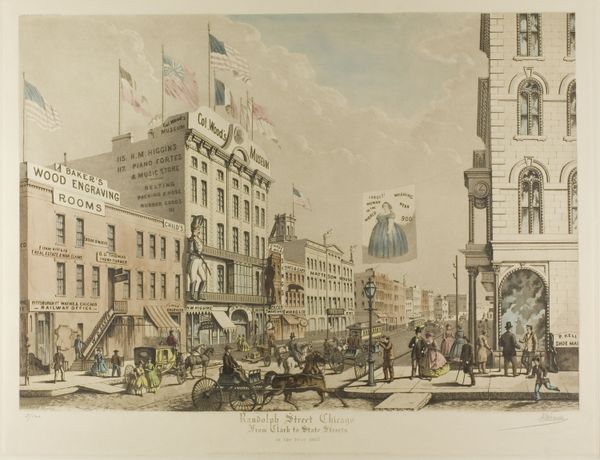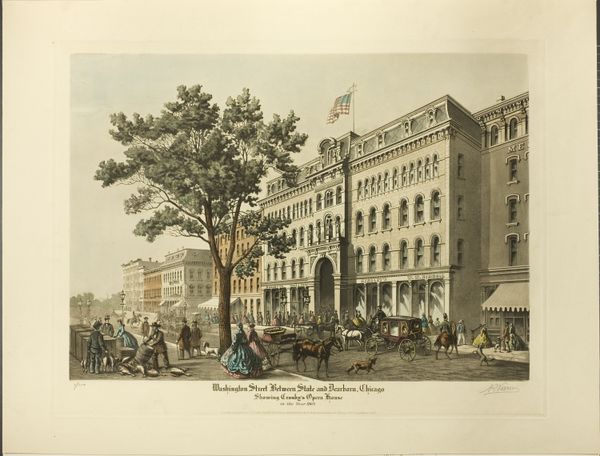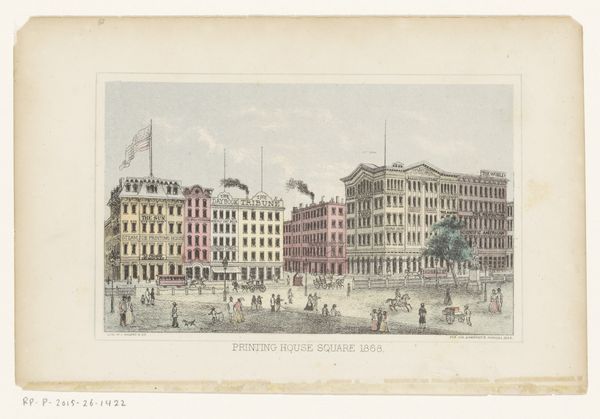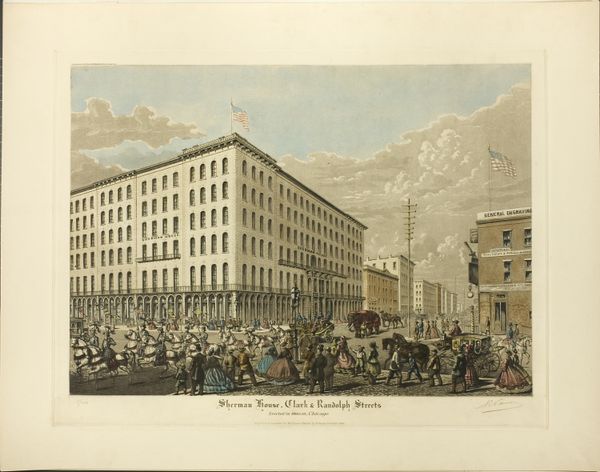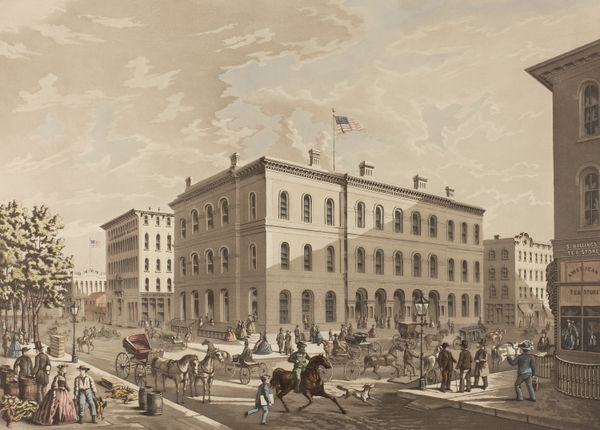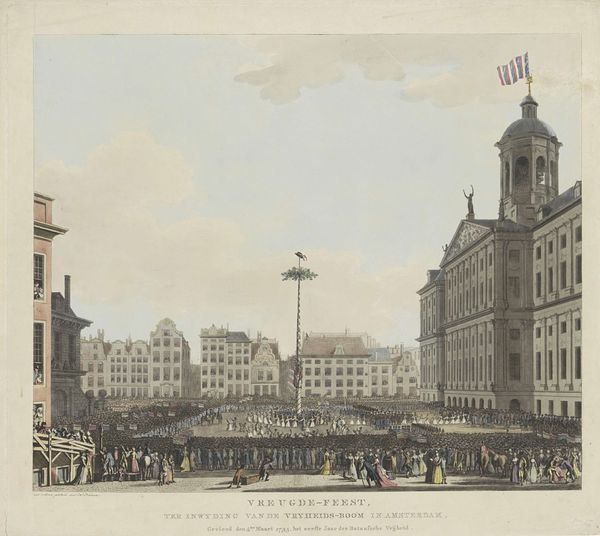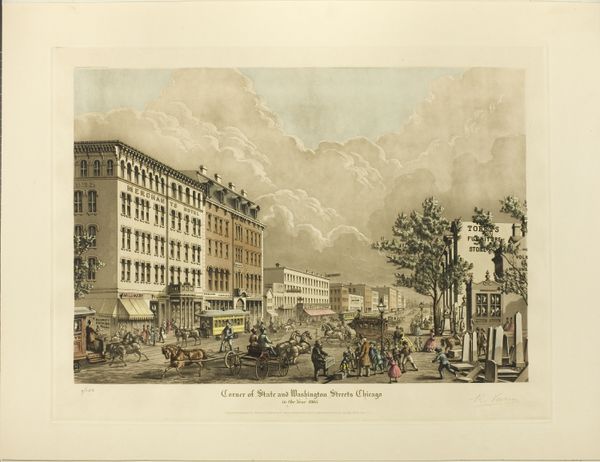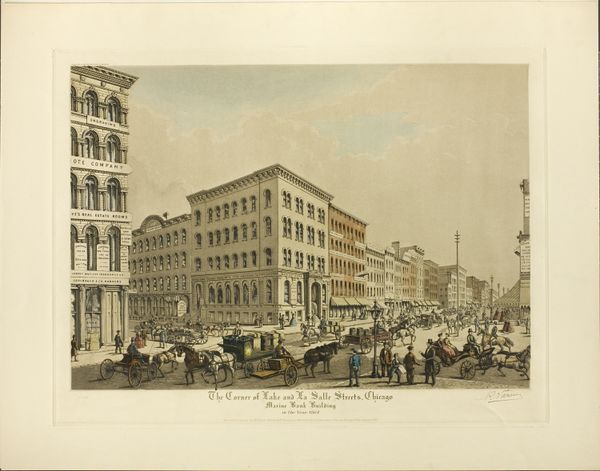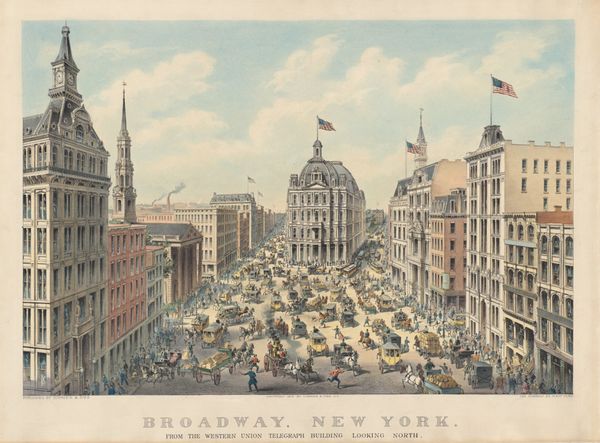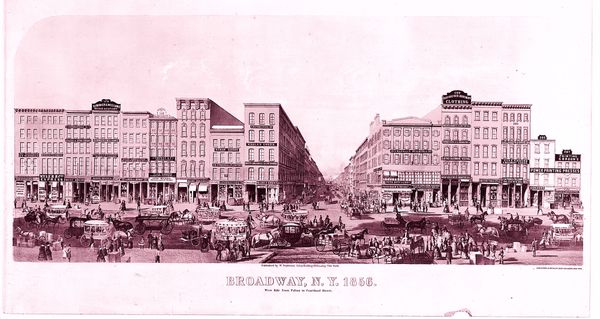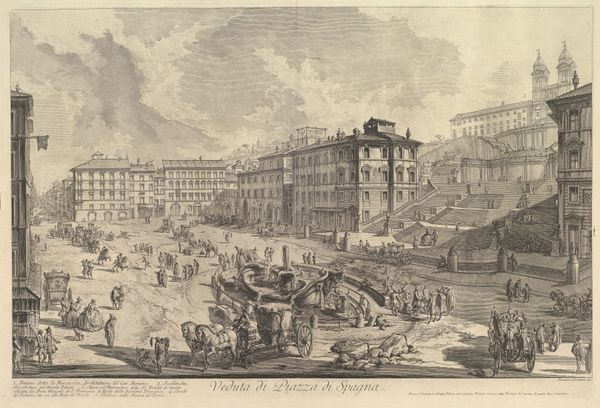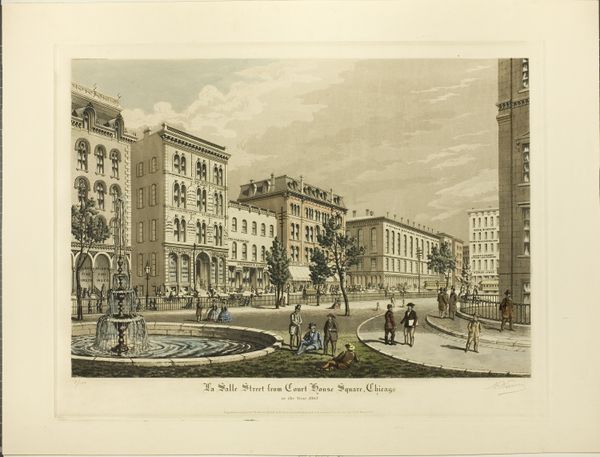
Dimensions: Image: 17 9/16 x 25 13/16 in. (44.6 x 65.5 cm) Sheet: 20 1/4 × 26 11/16 in. (51.5 × 67.8 cm)
Copyright: Public Domain
Curator: This is "Printing-House Square, New York," created around 1866 by Endicott & Co. It's a lithograph and etching, a detailed depiction of a bustling cityscape. What’s your first impression? Editor: It's fascinating how the soft color palette contrasts with the subject matter. All the buildings and figures create a feeling of controlled chaos, doesn't it? I'm particularly drawn to how much human labor it would've required to create something so intricately detailed at that scale. Curator: Absolutely. Look at how Printing-House Square itself served as a central hub, literally the place where news and information were mass-produced and distributed, shaping public opinion and reflecting the pulse of the city after the Civil War. It also reflects the role of newspapers such as the "Tribune" as a force in public life. Editor: The level of detail is captivating. Consider the skill required to render all of that intricate detail using etching and lithography. What does this meticulous craft tell us about the status of printmaking in society? And how did these advancements impact the perception and consumption of imagery at this time? It's no mere depiction; it’s a constructed view reliant on industrial capabilities. Curator: That's right. This image functioned as a record and promoter of a specific urban narrative. Consider how the scene presents an idealized vision of post-war New York. This area was the literal crossroads where information, commerce, and politics converged and affected public perceptions of urban space. Editor: Yes, the perspective it presents also reflects the means by which these perspectives were constructed and circulated. And how many of these images were actually consumed locally? The print would have allowed for wider distribution, making it crucial to shape a national image of progress and urban dynamism. Curator: I think you're right. It serves as an idealization of a unified nation. Endicott and Co. helped shape that image, and, like newspapers themselves, participated in political life as much as they simply reflected it. Editor: A powerful reminder of how art intertwines with both the means and the message, I think. Curator: Agreed, it’s fascinating to see how that interplay unfolded.
Comments
No comments
Be the first to comment and join the conversation on the ultimate creative platform.
